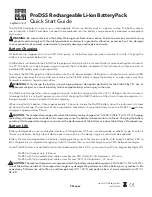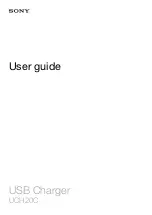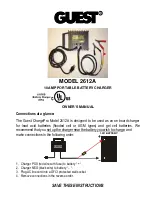
D. Normal 3-Stage Charging Operation
3-stage battery charging operational graph.
Stage 1.
BULK
. Constant current charging, Bulk LED is on.
The battery is charged at constant maximum current until it rises to the selected Absorption voltage level.
The charging voltage changes with the battery voltage.
If the initial battery voltage is less than 9V due to deep discharge, the bulk charge current is reduced to half of the maximum until
battery voltage rises over 9V.
Stage 2.
ABSORPTION
. Constant voltage charging, Absorption LED is on .
Battery Type Selection :
Gel : 14.1V / AGM: 14.3V
/
Wet : 14.4V / Calcium-Calcium : 15.5V
When the battery voltage rises to the selected Absorption Voltage Level, the charging switches to Constant Voltage Charging and
the battery is over 85% full. The battery is kept at this high voltage while the current reduces gradually to set value at which the
charger automatically switches to Float Stage.
Stage 3. FLOAT
. Constant voltage charging, Float LED is on.
Float Voltage Selection : 13.2V / 13.5V / 13.8V
In this stage the battery is full and only takes in the amount of current necessary to maintain the battery capacity. The float voltage
is preset by the user according to the type of battery used.
E. Manual Equalization Charging for Wet and Calcium-Calcium type batteries
Wet lead acid and Calcium-Calcium type batteries require periodic high voltage charging to balance the voltage of each cell, to
reverse the high concentration of electrolyte at the bottom and clear up large sulfate crystals on the plates. You can use the
Calcium–Calcium selection to perform manual equalization by carefully following battery manufacturer’s instructions.
Make sure to manually switch off the charger at the end of equalization charging.
Take special precautions as batteries will emit explosive gases during equalization charging.
Do not have any loads connected to the batteries during equalization charging as higher voltage (15.5V) may cause damage to
equipment.
F. Dual Battery Charging
This feature is for caravans and vehicles with two separate batteries.
The two batteries must be of same chemical make up and type to avoid over or under charging because only one setting of
charging profile is possible for both.
Two batteries are charged simultaneously and the battery with the lower level will receive larger share of the current in the Bulk
Charge Stage until it is brought up to the same voltage level as the other battery .
Both batteries will go to Absorption and Float Charge at the same time.
Fig.3


























